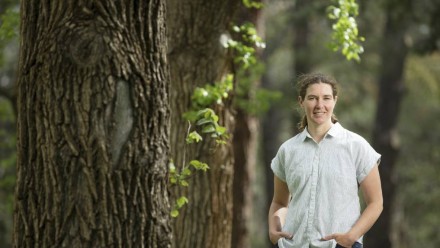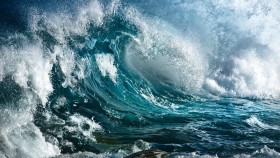ANU's Adele Morrison receives $25,000 L'Oréal-UNESCO For Women in Science grant for climate change research
If all of Antarctica was to melt, it would increase the sea level by nearly 60 metres and would see cities such as Sydney disappear.
It's not a pleasant thing to think about but for Australian National University scientist Adele Morrison, it's something that she considers on a daily basis.
The climate and fluid physicist researches oceanic movements around Antarctica's ice sheet to determine when coastal cities will be at risk of rising sea levels. It is this work which on Monday saw her awarded a fellowship and a $25,000 grant from the L'Oréal-UNESCO For Women in Science program.
The L'Oréal-UNESCO For Women in Science program aims to address the under-representation of women in science.
According to United Nations Educational, Scientific and Cultural Organization (UNESCO) data, less than 30 per cent of the world's researchers are female.
It's for this reason that Dr Morrison says the benefit of receiving the grant is not just what the money will do for her research but that it also draws attention to the under-representation of women in science.
"It depends on what level of science you're looking at. The numbers at a PhD level and early career stage - which is where I am - are actually pretty equal," she says.
"The problem occurs higher up at the leadership stage. In Australia, 17 per cent of senior Australian researchers working in science are female. It just drops off dramatically at about this stage because that's when women start having kids and it becomes hard to keep working at the top level.
"Universities in Australia are fantastic - at least at ANU it is - and they've put in a lot of great policies for helping women and trying to increase the representation at higher levels.
"But this culture is only just really starting to change, and internationally it's pretty dire."
Dr Morrison is undertaking advanced computer modelling to study and map the ocean activity relevant to the melting of the Antarctic sheet so that it can be determined how long it will be until cities are underwater.
With 40 per cent of the global population and 85 per cent of the Australian population currently living within coastal regions, the rising of sea levels in coming years caused from the melting of Antarctica's ice sheets is of major concern.
"The impact of the sea level will mostly be felt from extreme sea-level events, so it's not so much just the slow inundation from rising sea level, it's when you get extreme events," Dr Morrison says.
"These currently occur when you get like a king high tide combined with a storm event. You might remember back in 2016 there was one of these events on the northern beaches in Sydney and there were photos of swimming pools and backyards falling into the ocean.
READ HERE









